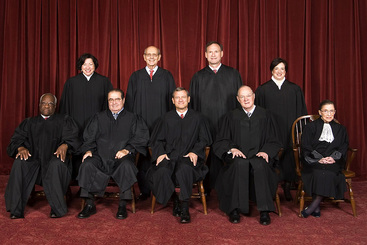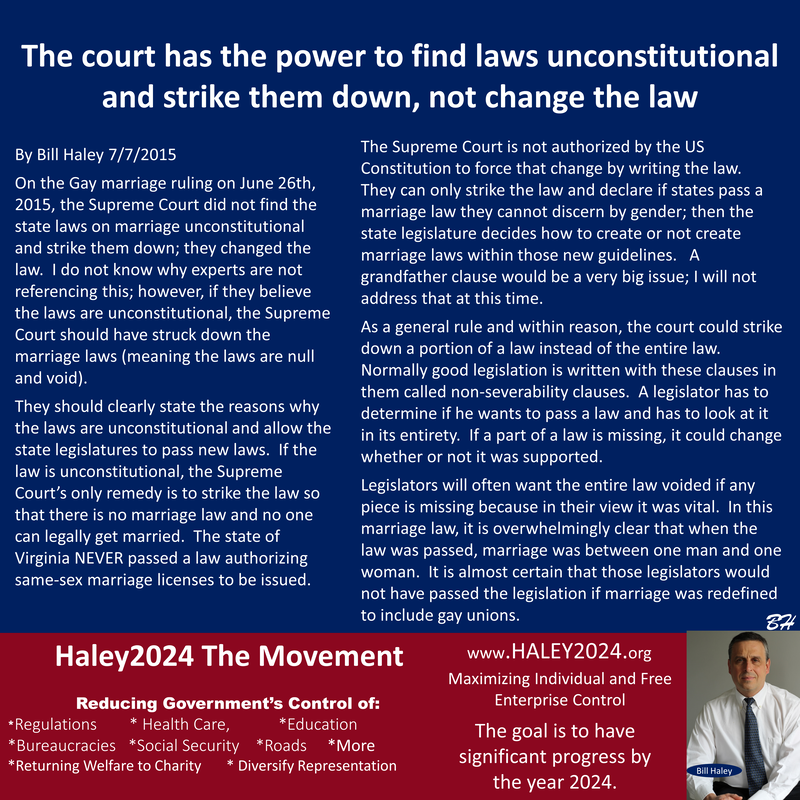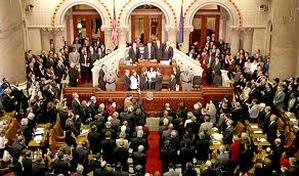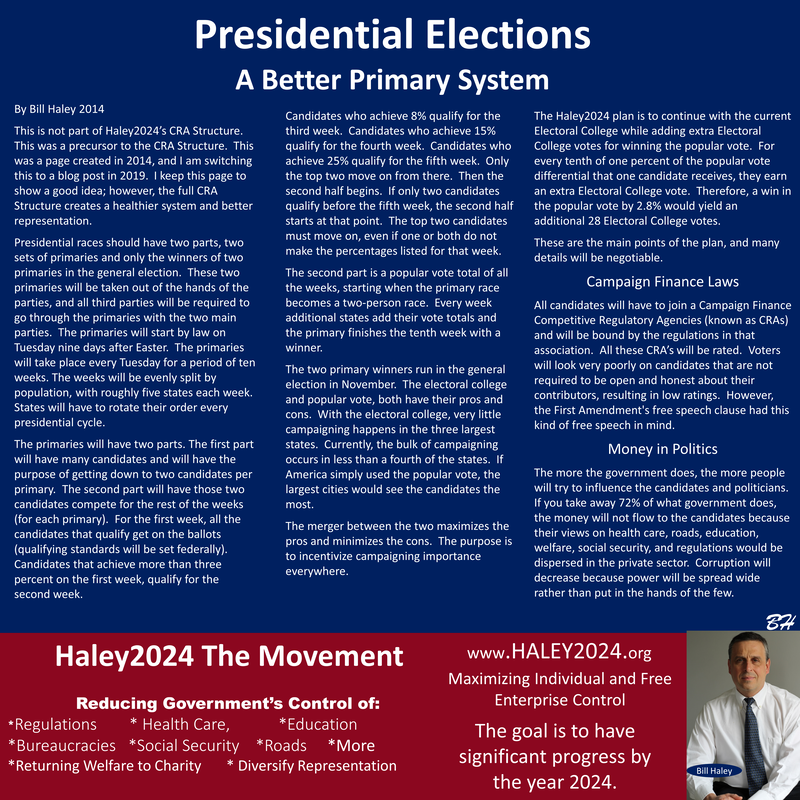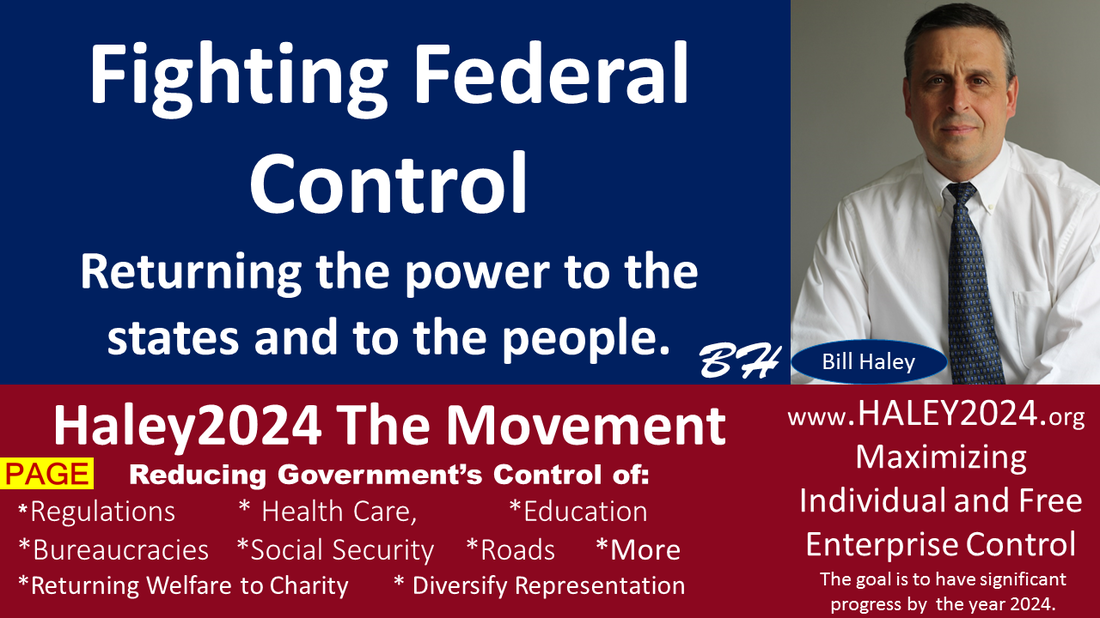|
|
2nd proposed US Amendment: Supreme Court Justices will serve one nine-year term. The terms will stagger by one year for each justice. The first year of a presidential term, all the members of all the state’s Supreme Court Justices will appoint one U.S. Supreme Court Justice. The president will appoint one Justice in the second year of the presidential term. The governors will appoint one Justice, the third year of the presidential term. The state legislators will appoint one Justice, the fourth year of the presidential term. All groups will appoint through a multiple-round voting system.
|
|
Note: A similar system for lower federal courts would apply as well. Therefore, this applies to all 870 authorized Article III judgeships.
All appointments are still subject to Senate confirmation: however, the language should include the words the Senate must vote within three months of an official nomination. If a Senate confirmation is not completed at the time of the beginning of a term, the nominating body must pick a senate-confirmed judge or justice (including those that have termed out) to serve until a nominee obtains a Senate confirmation. |
This Amendment seeks two major reforms.
|
First, this proposal switches Supreme Court Justices from lifetime terms to one nine-year term. Lifetime terms had the benefit of not being at the will of current politicians; however, it came with the downside of Justices that lost mental ability due to old age. Politicians nominate and confirm Justices with a specific judicial temperament and legal philosophy. Some Justices have significant changes in temperament due to many issues. While it might be a good idea for judges to have independence, a nominating politician that was elected by the people should be able to count on an inheritance to the legal philosophy that was present before the nomination and at the confirmation hearings.
|
|
The nine-year term still allows for that same independence; however, mitigates against the two downsides mentioned. The old age issue is obviously significantly reduced by the nine-year term. Significant temperament and philosophical changes usually take over a decade to materialize. The voter’s decisions on the elected politicians involved in putting a Justice on the court will have greater control of the direction of the court. It is crucial for good government that the citizens have a say in all three branches of government. The shorter and more defined term allows citizens greater control and the sense that they can make a difference.
|
|
The nine-year term also changes a lawyer’s career path and opportunities. Judges on average make far less than the lawyers standing in front of them. A nine-year term can allow a lawyer to do his public service for a time and reenter private practice with a better earning potential. Gaining the perspective of a judge can make a person a better lawyer. Many studies have shown that leaders of organizations reach a peak of efficient leadership at roughly ten years; judges and Justices are likely to have that same dynamic.
|
|
Second, this proposed US Constitutional Amendment spreads the authority regarding whom appoints the justices. Having the president appoint all the judges and Justices, gives one person too much power. Presidents have long looked for potential nominees that would favor new presidential and federal powers. FDR was thwarted by the courts for years until he had enough replacements that allowed him to implement programs previously considered beyond constitutionally authorized.
|
|
The states created the federal government with limited powers. It was an unwise idea to allow federal politicians to fill the judicial branch with people that could just interpret the US Constitution beyond what the states elected leaders authorized in the ratifying conventions. Originally, the US Senators were appointed by state legislators, thus had some control over the judicial branch via the confirmation votes. That state control was significantly diminished in 1913 with the 17th Amendment. The states should have maintained some control by appointing some of the judges and Justices.
|
|
This Haley2024 proposal would divide appointment powers in four ways. The US President appoints one-fourth of the federal judges and Justices. The Governors appoint one-fourth of the federal judges and Justices. The state court Justices appoint one-fourth of the federal judges and Justices. The state legislators appoint one-fourth of the federal judges and Justices. This proposal would significantly spread the authority of appointments around with 75% coming from state sources, thus allowing state officials of all three state branches to protect the limitation of the federal government that the states and the states’ people created.
|
|
There are currently nine US Supreme Court Justices, and this proposal maintains that number as well as the number of lower court judges. Since there are four nominating bodies; each of the four bodies would always have two of their Justices and one-quarter of the time would have three. Once the Justices and judges are on the court, they are fully independent, and their primary responsibility is to represent and protect the US Constitution.
|
|
Three nominating bodies of the three branches of state government will have 50, 450, and 7,383 members in them; therefore, there would need to be a system for them to nominate. There are many systems, and Haley2024 would be open to many different methods. Each body could have a different system from the others. Haley2024 would not recommend a straight vote where the greatest vote total wins unless it is a majority.
|
|
The judicial branch would have nine of the highest state court judges from each state, in the judicial nominating body as defined by law of each state. The fifty governors are easy to identify. The 7,383 legislators are from each state’s legislative branch. There would also be issues of giving all states the same voting strength or have them weighted based on population. Possibly a combination of the two would be wise. A legislator in California represents about 500,000, and a Wyoming legislator represents about 10,000.
|
|
One proposal is that every voting member name a possible nominee and the top ten names at a precise date becomes the only ten names to consider going forward. The nominating body would take eight votes to eliminate one name each voting round leaving two possible nominees. Every voting round could be every other day. The last vote is for the official nominee. Possibly the voting strength based on population size could vary within voting rounds.
|





